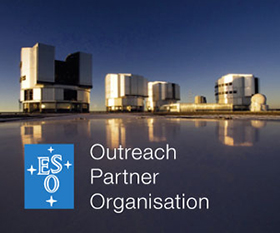This page refers to the IAstro Summer Internships of 2022. Please go to this page for the 2023 edition.
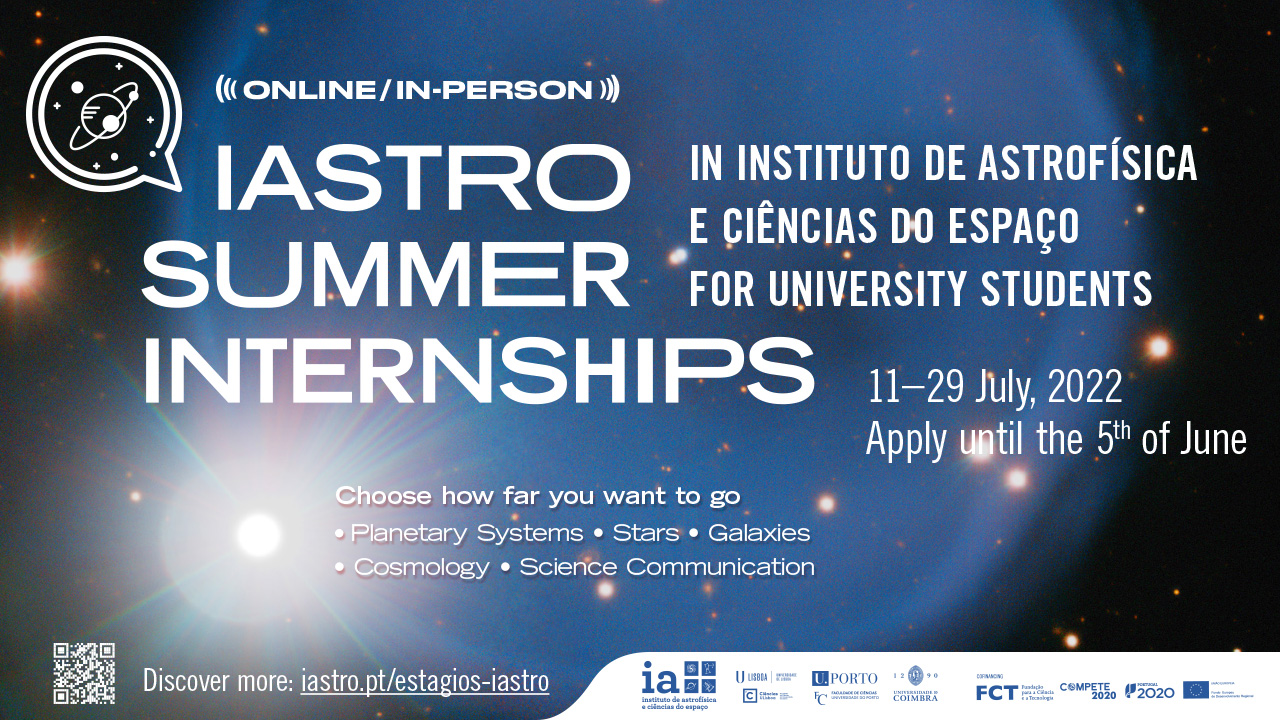
The IAstro Summer Internships Program will run between the 11th and the 29th of July.
In this program, university students learn about research and science communication at the Instituto de Astrofísica e Ciências do Espaço (IA). The program involves developing a research or science communication project, accompanied by researchers from the IA and the Faculties of Sciences of the Universities of Lisbon or Porto. Three science communication workshops are also part of the program. On the last day, the projects are presented in a final seminar.
This year, the projects will run entirely online or in a hybrid format, agreed between students and supervisors, after acceptance in the project.
The IAstro Summer Internships Program is open to Portuguese and international Bachelor or Master students. Participants are expected to dedicate to the program at least 6h/day during weekdays and attend all the science communication workshops.
This internship opportunity is unremunerated.
How to apply
To apply, please send:
- a motivation letter;
- your CV (maximum of three pages);
- list of the completed subjects and respective grades of your degree;
- three choices among the available projects, by preference (see list and project descriptions below).
to until the 5th of June. Results will be announced on the 15th of June.
Projects
-
- Black hole shadows and photon rings
- Wormholes in spacetime and their use for interstellar travel: a tool for teaching general relativity
- Exploring the impact of modifications of gravity law on cosmological observables
- The Cosmic Microwave Background radiation: a phenomenological study
- Testing the Universe’s acceleration law
- Cosmological Tests: How to know the evolution of the Universe?
- Is there Gravity beyond Einstein?
- Light my MOSFIRE
- Passive, but not resigned
- Automatic classification of galaxies using the Galaxy Zoo data and supervised learning
- Using deep learning to estimate the bulge-to-total light ratio of galaxies
- How fast do galaxies grow?
- Local vs. global physical properties of galaxies
- Giant hub-filament systems
- On the origins of super-Mercuries
- What are the terrestrial exoplanets made of?
- Do the chemical mixtures of rocky planets reflect the initial composition of the planet-forming disk?
- Can the Ti I 5713.9 and Fe II 6149.2 A spectral lines be used to follow RV activity noise?
- Studying the atmospheres of other worlds within the Solar System
- The Universe at everyone’s reach
- Contributions to research in astronomy teaching and communication
Science communication workshops
15th July: Public Engagement with Science
22nd July: Visual communication: presentations and (e)posters
28th July: Oral communication: body, voice and message
Projects description
Black hole shadows and photon rings
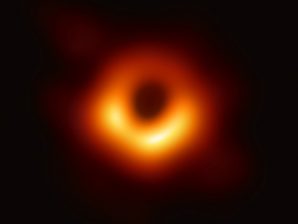
Supervision: Francisco Lobo – IA and Ciências ULisboa
Language: Portuguese/English
Maximum number of students: 5
Format: online/in-person
The Event Horizon Telescope (EHT) collaboration recently reported the first observation of a supermassive black hole, at the centre of the nearby galaxy M87. In this project, the students will acquire the mathematical tools and the physical intuition to describe this amazing observation, in an elementary manner. More specifically, the presence of a bright “photon ring” surrounding a dark “black hole shadow” has been discussed as an important feature of the observational appearance of emission originating near a black hole. We clarify the meaning and relevance of these heuristics with analytic calculations and numerical toy models. The standard usage of the term “shadow” describes the appearance of a black hole illuminated from all directions, including from behind the observer. A photon ring results from light rays that orbit around the black hole in the near field region before escaping to infinity. We also aim to build a bridge to state-of-the-art research where several shadows of alternative compact objects are studied and compared to black holes.
Wormholes in spacetime and their use for interstellar travel: a tool for teaching general relativity
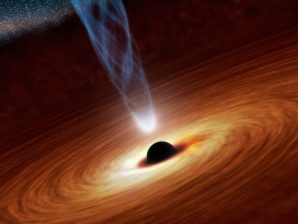
Supervision: Francisco Lobo – IA and Ciências ULisboa
Language: Portuguese/English
Maximum number of students: 5
Format: online/in-person
Rapid interstellar travel by means of spacetime wormholes is described in a way that is useful for teaching elementary General Relativity (GR). Many objections are given against the use of black holes or Schwarzschild wormholes for rapid interstellar travel. A new class of solutions of the Einstein field equations is presented, which describe wormholes that, in principle, could be traversed by human beings. It is essential in these solutions that the wormhole possesses a throat at which there is no horizon; and this property, together with the Einstein field equations, places an extreme constraint on the material that generates the wormhole’s spacetime curvature. This material violates all the ‘‘energy conditions’’ that underlie some deeply cherished theorems in GR. However, it is not possible today to rule out firmly the existence of such material; and quantum field theory gives tantalizing hints that such material might, in fact, be possible. In this project, the students will study and solve the static and spherically symmetric Einstein field equations, with applications to traversable wormhole geometries, with the fundamental motivation in being an ideal tool for learning the basics of Einstein’s GR.
Exploring the impact of modifications of gravity law on cosmological observables

Supervision: Noemi Frusciante – IA and Ciências ULisboa
Language: English
Maximum number of students: 2
Format: online
A problem faced by modern cosmology concerns cosmic acceleration, i.e. the phase of accelerated expansion recently entered by the Universe, for which we still lack a satisfactory theoretical explanation. A plethora of models addressing this phenomenon has been proposed and analyzed. Moreover, the ability to constrain various properties of cosmological models using observational data such as the anisotropies of the cosmic microwave background, the large scale structure of the galaxy distribution, the expansion and acceleration rate of the universe and other such quantities, has become an essential part of modern cosmology. A crucial aspect of this endeavour is to be able to accurately calculate a range of observables from the cosmological models. This is done with Einstein-Boltzmann EBo solvers, i.e. codes that solve the linearized Einstein and Boltzmann equations on an expanding background. A popular EB code is CAMB which was developed to accurately model the standard cosmology, i.e. General Relativity with a cosmological constant. Recently, an extension of CAMB, dubbed EFTCAMB, has been developed with the purpose of testing a broad class of modified gravity theories. In this project, the student will study the basis of linear cosmological theory of gravity with application to modified gravity. He/she will be familiar with EB code, EFTCAMB and will investigate the deviations from the standard cosmological model of a specific modified gravity model.
The Cosmic Microwave Background radiation: a phenomenological study
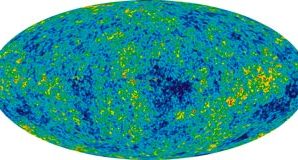
Supervision: Noemi Frusciante – IA and Ciências ULisboa
Language: English
Maximum number of students: 2
Format: online
The cosmic microwave background (CMB) is the furthest back in time we can explore using light. It formed about 380,000 years after the Big Bang and imprinted on it are traces of the seeds from which the stars and galaxies we can see today eventually formed. Hidden in the pattern of the radiation is a complex story that helps scientists to understand the history of the Universe both before and after the CMB was released. Any theoretical model which aims at explaining the evolution of the Universe is characterized by a given number of parameters. Different values of these parameters produce a different distribution of structures in the Universe, and a different corresponding pattern of fluctuations in the CMB. Thus CMB can help astronomers extract the parameters that describe the state of the Universe soon after it formed and how it evolved over billions of years. In this project, the student will investigate the impact of cosmological parameters on the CMB. The project is divided in two steps: firstly the student will get in touch with the phenomenology associated with the CMB, then a hands-on part will follow, where the student will reproduce the CMB cosmological observables.
Testing the Universe’s acceleration law
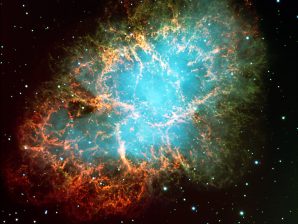
Supervision: Nelson Nunes, José Ferreira and António da Silva – IA and Ciências ULisboa
Language: Portuguese/English
Maximum number of students: 2
Format: online/in-person
In this project, the student gets acquainted with observational data on the magnitude of Ia supernovae in order to understand the nature of the acceleration of the Universe. This work uses as its main tool symbolic regression techniques in which the law of the expansion rate of the Universe is tested without initial theoretical hypotheses.
Cosmological Tests: How to know the evolution of the Universe?
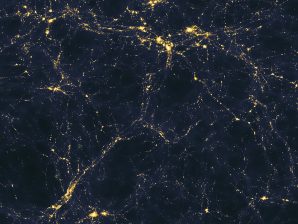
Supervision: José Pedro Mimoso and António da Silva – IA and Ciências ULisboa
Language: Portuguese/English
Maximum number of students: 2
Format: online/in-person
How do you know if the Universe is expanding rapidly? What role does dark energy, or other alternatives, play in its evolution? This activity introduces the problem of how to test physical theories about the evolution of the Universe. Participants will work with mathematical models and observable quantities that allow confronting fundamental theory with cosmological observations.
Is there Gravity beyond Einstein?
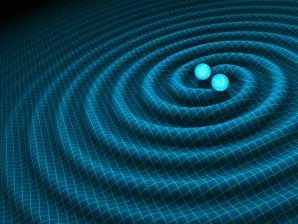
Supervision: José Ferreira, Nelson Nunes, Tiago Barreiro and José Pedro Mimoso – IA and Ciências ULisboa/Universidade Lusófona
Language: Portuguese/English
Maximum number of students: 2
Format: online/in-person
With the first (and only!) detection of a standard siren in 2016 (an event caused by the collision of two neutron stars and the consequent emission of gravitational waves and electromagnetic radiation), a new way of studying the Universe was born. If current gravitational wave observatories and those under construction and planning detect several of these events, they could be accurate enough to detect variations to Einstein’s gravitation laws of Relativity. In this project, students will start by producing a theoretical catalog of standard sirens and, using statistical methods, assess whether these observatories will be able to distinguish between different cosmological models. The project has an analytical aspect focusing on theoretical models of gravitation and cosmology and a numerical aspect dedicated to the constraints of the models. Depending on the student’s training and interest, he/she can focus on one of these two parts of the project.
Light my MOSFIRE
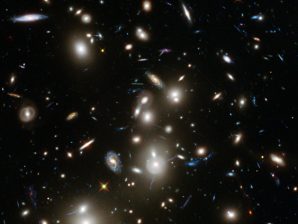
Supervision: Ciro Pappalardo and Israel Matute – IA and Ciências ULisboa
Language: Portuguese/English
Maximum number of students: 2
Format: online/in-person
The main challenge of Astrophysics in the last decade has been the construction of a complete picture of galaxies evolution. To fully model the observations, it is necessary to include in a consistent framework all the physical processes responsible for the emission observed. As an example, the contribution due to the nebular emission, i.e. the ionized gas surrounding the star-forming regions, can be very large in star-forming galaxies. However, despite this possibility, most of the code to interpret the spectrum of a galaxy is “purely stellar”, assuming a negligible fraction of nebular emission. The University of Porto developed recently a tool for the interpretation of a spectrum in terms of a combination of stellar and nebular emission, FADO. The first tests, applied to the sample of nearby galaxies in SDSS, have shown promising results, allowing now the possibility to investigate the evolutionary trends of the stellar and nebular relative contribution to the total emission at younger epochs. The goal of this project will be to investigate such components in higher redshift galaxies, taking into account the MOSFIRE Deep Evolution Field (MOSDEF) survey, a program to observe the stellar, gaseous, metal, dust, and black hole content of ~1500 galaxies when the Universe was 1.5 to 4.5 billion years old. One of the fields observed with MOSDEF is COSMOS, and this dataset has been recently released to be investigated by the scientific community. With such data and applying the FADO analysis tool developed in Porto, the project will tackle the debated problem of the evolution of stellar and nebular emission at different galaxies epochs.
Passive, but not resigned

Supervision: Ciro Pappalardo and Israel Matute – IA and Ciências ULisboa
Language: Portuguese/English
Maximum number of students: 2
Format: online/in-person
According to the latest galaxy evolution models and various observations, the number of stars produced in the Universe during the last 14 billion years has not been constant. In the first 5 billion years galaxies that populated the Universe produced stars at a growing rate, which declined quite rapidly between 5 and 9 billion years ago. The signature of this event is seen through an observed dichotomy between galaxies, where we can identify a sample of objects where the star formation is still ongoing (blue star-forming), and another category of galaxies where the star formation is quite low or even absent (red passive). Intermediate between these two categories there is a subsample occupying the so-called ’green valley’, formed by galaxies that are migrating from the blue star-forming cloud to the red passive zone, through a process called ’quenching’. The identification of such subsamples through observations is quite challenging because it relies strongly on template models, used to fit the observed photometry and/or spectroscopy. These models are inherently biased towards regions of parameter space that are more populated by observations, being less reliable once the galaxies have peculiar characteristics. The goal of this project is to compare the outcome from different selection methods applied to a very well-known field, COSMOS, which has been observed at different wavelengths, and for which we have also a control sample observed spectroscopically. Through this analysis, we will try to refine these techniques, tackling the origin of the discrepancies observed and offering to the community more refined recipes to identify passive galaxies in future surveys.
Automatic classification of galaxies using the Galaxy Zoo data and supervised learning

Supervision: Pedro Cunha and Ana Paulino-Afonso – IA and UPorto
Language: Portuguese/English
Maximum number of students: 2
Format: online/in-person
Galaxies can be classified by their morphology, as proposed by Hubble in 1936. The galaxy’s shape is correlated with its physical properties, such as star formation rate and gas fraction, and also with its merger history (for example, the existence of mergers with other galaxies), and gas fraction. These correlations are a vital step towards a better understanding of the formation and evolution of galaxies. The scientific and technological advancement of observational instruments increased substantially the number of detected sources, making it impossible for astronomers to visually classify galaxies one by one. The Galaxy Zoo project is a community-based program for the visual classification of galaxy images obtained with the Sloan Digital Sky Survey (SDSS), where people were asked to participate and help to classify 900,000 galaxies into elliptical, spiral and merger products. This provides the perfect environment for the application of automatic classification algorithms using machine learning to further classify sources to be detected with new instruments, such as ESA’s Euclid space telescope. In this project, you will build a machine learning pipeline capable of identifying galaxy morphology with image data using the TensorFlow platform. No past experience with machine learning frameworks is necessary, but practical knowledge of Python is required.
Using deep learning to estimate the bulge-to-total light ratio of galaxies
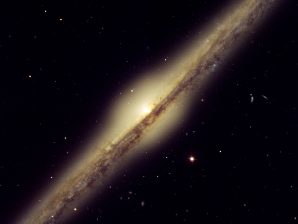
Supervision: Pedro Cunha and Ana Paulino-Afonso – IA and UPorto
Language: Portuguese/English
Maximum number of students: 2
Format: online/in-person
The bulge-to-total light ratio is an important parameter that can be correlated to physical quantities that helps us to better understand galaxy evolution. Also, this parameter is correlated to the central mass of the supermassive black hole that inhabited the galaxy. With the increase of detected galaxies from the Sloan Digital Sky Survey (SDSS), automatic methodologies must be implemented to help astronomers to focus more on the science. Machine learning, in particular deep learning, is a very powerful tool that can be used to predict such parameters using computer vision. However, with great power comes great responsibility, meaning that the physics behind the observations should not be forgotten. In this project, you will build a machine learning pipeline capable of estimating the bulge-to-total light ratio of galaxies with images using the TensorFlow platform. No past experience with machine learning frameworks is necessary, but practical knowledge of Python is required.
How fast do galaxies grow?
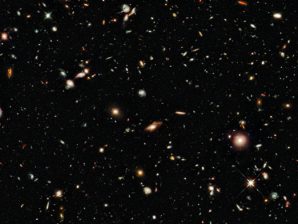
Supervision: Ana Paulino-Afonso and Pedro Cunha – IA and UPorto
Language: Portuguese/English
Maximum number of students: 1
Format: online/in-person
A galaxy’s structure gives us insights into its evolution. And galaxy size is one of the fundamental physical parameters required to understand how they evolved since the dark ages (the period before the first stars were born). The student will use published datasets on the COSMOS field to quantify the evolution in galaxy sizes over the past ~13 billion years. The results will then be compared with recent works from the scientific literature.
Local vs. global physical properties of galaxies
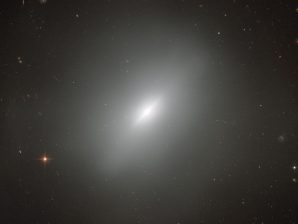
Supervision: Ana Paulino-Afonso and Pedro Cunha – IA and UPorto
Language: Portuguese/English
Maximum number of students: 4
Format: online/in-person
Galaxies are known to have strong variations in the stellar, dust and gas content within their boundaries. However, only recently we have begun to explore these variations on a larger scale with the advent of multiple Integral Field Spectrographs (IFS) installed in telescopes throughout the world. Nevertheless, they are still expensive observations to take, and for most galaxies, we only have access to global information. In this project, the student(s) will make use of IFS data from the MUSE instrument (installed at ESO’s Very Large Telescope) to compare results from local measurements (e.g. stellar mass, star formation rate, metallicity, dust, electron density) with those derived from integrated light.
Giant hub-filament systems
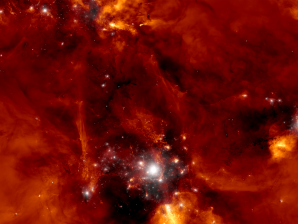
Supervision: Nanda Kumar – IA and UPorto
Language: English
Maximum number of students: 2
Format: online/in-person
The cold and dense gas in the interstellar medium (ISM) is filamentary in nature. In a dynamical evolving ISM, which is subject to shock waves from supernovae, feedback effects, filaments are moving constantly and when they criss-cross each other they form junctions called hubs. For the first time, our group showed that star clusters and very massive stars preferentially form in such hub-filament systems. The Herschel Space Telescope has mapped the majority of the Milky-Way disk plane in five far-infrared bands. There are about 144 targets which are so bright that the central parts of those images are saturated. We have found that all these saturated sources represent hub-filament systems after remodeling and fixing those patches. This project involves using these 144 targets and producing a catalog of giant hub-filament systems using dust surface density maps and images. The project will involve looking at the images, analyzing them in some simple ways and producing some spectacular color images of giant hub-filament systems. If the student is familiar with Python programming, additionally a small recipe to produce surface density maps using the Herschel space telescope data can be coded.
On the origins of super-Mercuries
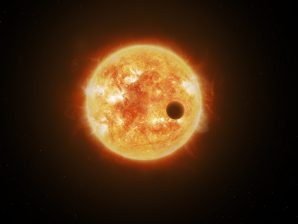
Supervision: Vardan Adibekyan, Bárbara Soares, Sérgio Sousa and Elisa Delgado-Mena – IA and UPorto
Language: English
Maximum number of students: 2
Format: online/in-person
The unusually high density of Mercury and super-Mercuries – higher-mass analogs of Mercury – is commonly attributed to giant impact which stripped away most of their outer mantle. However, recent planet formation simulations that incorporate realistic collisions are unable to produce the highest-density super-Mercuries. By using the largest possible sample of precisely characterized low-mass planets and their host stars, we (our group) found, however, that super-Earths (higher-mass analogs of the Earth) and super-Mercuries appear to be distinct populations in compositional space implying differences in their formation processes. Based on the observational data we put forward a hypothesis that giant impact alone cannot be responsible for the formation of super-Mercuries and suggested that the high-density of super-Mercuries is primordial and related to the composition of protoplanetary disks (reflecting the composition of the star) and to their formation under specific conditions and at specific locations. The aim of the proposed project is to use the masses and radii from exoplanet catalogs of low-mass exoplanets and by calculating their densities identify the super-Mercuries and super-Earths. These two samples of planets and their host stars will then be statistically studied to confirm or infirm the hypothesis that the super-Earths and super-Mercuries are distinct populations with distinct origins. In this project, the student will directly work with the state-of-the-art exoplanet data and will learn the basics of exoplanet interior compositions. Basic knowledge in programming (preferably in Python) will be seen favourably.
What are the terrestrial exoplanets made of?
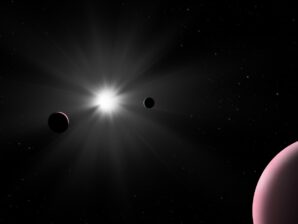
Supervision: Vardan Adibekyan, Bárbara Soares, Sérgio Sousa and Elisa Delgado-Mena – IA and UPorto
Language: English
Maximum number of students: 2
Format: online/in-person
Since the Nobel Prize-winning discovery of the first extrasolar planet orbiting an ordinary star, thousands of exoplanets have been detected, with a growing population of them being rocky worlds like our Earth. The detection and characterization of such terrestrial planets around Sun-like stars is currently one of the main drivers for the development of large space-borne missions and ground-based instruments by the major international agencies (ESO, ESA, NASA). With the swift advance in exoplanet sciences over the last decades it is now possible to characterize not only the main fundamental parameters of planets (mass, radius, density), but also their interior structure and bulk composition. The former is known to influence the habitability conditions of terrestrial planets and the latter in itself is a key aspect to understand planet formation processes and the origin of the diversity of planetary properties. To a first approximation, planets can be composed of different layers (iron core surrounded by a silicate mantle, a water layer, and an atmosphere) that can be modeled with the state-of-the-art structural models . The aim of the proposed project is to use one of the publicly available tools (ExoPlex) to determine the mass of the cores of the low-mass planets, with the ultimate goal of investigating the compositional diversity of terrestrial planets. In this project, the student will learn the fundamentals of planetary interior compositions and will work directly with exoplanet catalogs and cutting-edge techniques to model exoplanet interiors. Skills in programming (in particular using Python) are highly relevant for the project.
Do the chemical mixtures of rocky planets reflect the initial composition of the planet-forming disk?

Supervision: Vardan Adibekyan, Bárbara Soares, Sérgio Sousa and Elisa Delgado-Mena – IA and UPorto
Language: English
Maximum number of students: 2
Format: online/in-person
Stars and planets both form by accreting material from a surrounding disk. Because they grow from the same material, theory predicts that the composition of planet building blocks should (to first order) correlate with stellar atmospheric composition, especially for refractory elements. We know that this is true, at least, for the Sun and Solar System rocky planets (except Mercury). In fact, information on the composition of major rock-forming elements such as Fe, Mg, Si has been shown to improve interior estimates for terrestrial planets. However, rigorous studies on a possible correlation between stellar abundance and terrestrial planet density have been very limited and it is not yet clear how exactly the stellar abundances should be used as proxies for planet composition. The main scientific motivation of the proposed project is to test whether the composition of rocky planets reflect the initial composition of the planet-forming disk as estimated from the host star atmospheres. In practice, the student will I) collect the publicly available information about the interior composition of exoplanets, ii) will use a (already developed) tool to predict the composition of the planet-building blocks based on the composition of the host stars, and iii) use a publicly available Python tool (ExoLens) to test the hypothesis that the star and their terrestrial planets have a similar composition. In this project, the student will learn the fundamentals of exoplanet and host star compositions, and will work directly with the cutting-edge techniques of planet interior modeling. Skills in programming (in particular using Python) are highly relevant for the project.
Can the Ti I 5713.9 and Fe II 6149.2 A spectral lines be used to follow RV activity noise?
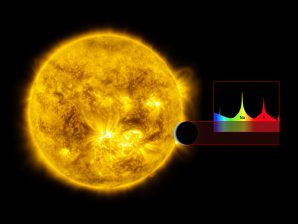
Supervision: João G. da Silva – IA and UPorto
Language: Portuguese/English
Maximum number of students: 1
Format: online/in-person
One of the most used techniques to detect exoplanets is the Doppler spectroscopy, also known as radial velocity (RV) method. This method consists of measuring the RV (the velocity projected in the observer’s line-of-sight) of a star to detect the very small periodic variations caused by an orbiting planet. However, stellar intrinsic phenomena can affect the measured RV. Zones with strong magnetic fields in the stellar disk are associated with active regions, which include dark spots and/or bright faculae. These regions, as the star rotates, will appear and disappear from sight, producing a modulation in the observed RV which can difficult or mimic the detection of low-mass planets. There are several spectroscopic indices used to detect those variations of stellar origin, for example based on the activity sensitive CaII H&K and Halpha spectral lines. In this project we intend to assess the suitability of the Ti I 5713.8828 A and Fe II 6149.2 A lines as activity indicators using spectra of a sample of solar-type stars from the HARPS spectrograph. The student will construct activity indices based on these lines and compare their variability with the CaII H&K and Halpha indices as well as RV. Basic knowledge of Python is required.
Studying the atmospheres of other worlds within the Solar System
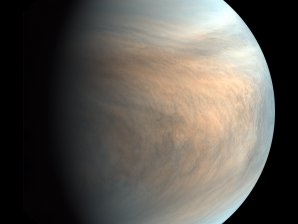
Supervision: Pedro Machado – IA and Ciências ULisboa
Language: Portuguese/English
Maximum number of students: 2
Format: online
Planets from the Solar System like Venus, Jupiter and Saturn, have very dynamic and complex atmospheres that only recently have been studied in detail, thanks to several space missions and advances in the optical capabilities of telescopes. In particular, modern Cloud Tracking techniques allow for the compilation of the collected data in wind maps that help us understand the global wind circulation of a planet. In this internship, one will explore the atmosphere dynamics of different Solar System planets, applying Cloud Tracking methods to data obtained with terrestrial telescopes such as ESO’s Very Large Telescope (VLT), in Chile, or during space missions such as NASA’s Cassini-Huygens. Besides the wind systems that will be explored using the cloud-tracking technique it is also proposed to detect and characterize atmospheric waves on Mars and Venus atmospheres for this purpose we will use space data from Mars Express (ESA) and Akatsuki (JAXA).
The Universe at everyone’s reach
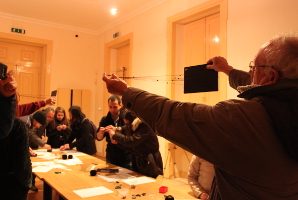
Supervision: Catarina Leote, Sérgio Pereira and João Retrê – IA and Ciências ULisboa
Language: Portuguese/English
Maximum number of students: 4
Format: online/in-person
Science and technology are part of everybody’s daily lives. However, their communication and outreach initiatives are not always accessible to all. There is no such thing as the “general public” but instead several individuals with different needs, preferences and limitations. When preparing a science communication activity, our main concern should be the audience: Who are they? What do they might know already? What do they have in common? Do they have any limitations or obstacles to fully experience the activity? Will they have any preconceived ideas about the subject of the activity? These are just some of the questions that we may ask ourselves while designing a science communication action. The next step is to bridge between the reality of the audience and what is hoped to achieve, the goals of the activity. In this internship, you will design and implement a science communication activity targeted at a specific public, integrated in the IA’s ongoing science communication projects.
Contributions to research in astronomy teaching and communication

Supervision: Ilídio André Costa – IA and Planetário do Porto-CCV/UPorto
Language: Portuguese/English
Maximum number of students: 5
Format: online/in-person
Participants will have the opportunity to carry out exploratory investigative projects in the field of astronomy teaching or communication. The project will involve the processing, analysis and communication of data already collected during IA activities. Elementary statistical analyses will be used in the data processing, such as the creation of tables, graphs and obtention of numerical indicators to present information about the tendency and dispersion of the data using, for example, the average and the standard deviation. The work plan involves 1) the selection of the IA data to work with, 2) data processing/analysis, 3) discussion of the results and conclusions and 4) presentation of the project.
What the participants say…
“It gave me perspective about the research area and made it very appealing. It introduced me to new tools, challenged me in a very good way and it was an amazing opportunity to learn about a very interesting theme directly from experts.“
“Learned a lot on several topics of astronomy and very helpful communication skills and tips which will certainly be useful in the future.”
“It was the most fun I ever had doing work, I learned a lot in 3 weeks and made me feel capable of facing more challenges and it also motivated me to learn as much as I can.“

